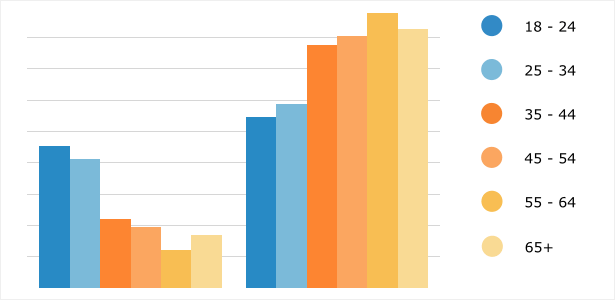 Here at Helloify, we know how important live chat is, especially when dealing with millennials.
Here at Helloify, we know how important live chat is, especially when dealing with millennials.
That’s why it was great to see the research company Software Advice produce this report which found 63% of millennials preferred to have their basic customer support questions answered via live chat over traditional channels.
To dig into this topic deeper I talked with the researcher who conducted this report, Craig Borowski.
Which types of businesses might benefit most from live chat?
First and most importantly, our research indicates that all businesses stand to benefit from implementing technology solutions which include live chat. Our survey results were, in that regard, strong and quite compelling. As for which types of businesses might benefit most… the answer to that, the data suggests, is online retailers.
What are some top reasons live chat appeals to millennials?
This is a great question and one which we’d like to examine in more detail in the future. Right now, and this is really just a hunch, it seems like the reasons are largely cultural. Millennials aren’t necessarily finding more or better or even different reasons for using live chat, they just prefer it. It’s a better fit for the millennial lifestyle.
If you think about it, millennials have been driving the shift to text-based real-time communication for a long time. They were early adopters for online chatting with friends and their generation is practically notorious for SMS messaging on mobile phones. It seems like online live chat in a customer service context is just the most natural channel choice for millennials.
What types of online interactions do millennial’s seem most comfortable with?
Millennials are most comfortable using live chat to answer simple questions and to get help with online shopping questions and decisions. However, a large percentage (nearly 50 percent) indicated they’re comfortable with, and actually have a preference for, live chat even to discuss important and complex financial issues.
Do you think older consumers will begin to use live chat technology more as the technology becomes more common?
Definitely. In fact, when we first reviewed our survey results, we were a bit surprised to see so many people in the older age brackets already reporting that they’ve used live chat. We expect that number to continue to grow.
One hypothesis for the discrepancy in live chat usage across different age brackets stems from differences in online browsing habits. Given their preference for live chat— and for text-based communication in general— millennials are more likely to actively seek out live chat when they have a question. On the other hand, older generations won’t necessarily seek it out, but they will use it if it’s presented to them at the right time.
This reinforces the importance of optimizing how, when and where live chat is presented on a company’s website. This optimization may be even more important when trying to get more non-millennials to take advantage of live chat.
What are some trends in live chat you see coming in the near future?
It’s a safe bet to say that the growth of live chat is going to continue in the future. It offers so many benefits, to both companies and their customers, that it will continue to remain a popular customer-service channel for a long time to come.
More specifically, we expect much of this growth will focus on mobile chat implementations. Consumer use of smartphones has been growing strongly for years and more and more people use their mobile phones to do things they once would have used a computer to do: shopping, banking, getting answers to their customer service questions.
The best way to provide great customer service is to make it effortless. Don’t expect customers to switch channels when they have a question, and don’t make them search high and low for the right contact channel. As more and more consumers switch to mobile as their preferred platform, companies need to follow suit and meet them there with their customer service.
You can check out the full study here.
Dan Norris
Latest posts by Dan Norris (see all)
- Use these live chat guidelines to train your team on using live chat software - February 5, 2015
- 5 customer happiness blogs you should be reading - February 4, 2015
- Live chat research – Interview on why people prefer live chat - January 26, 2015


